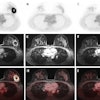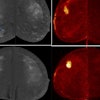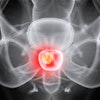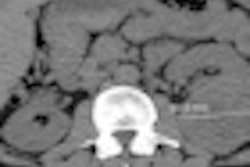Low-dose CT lung screening has already demonstrated its effectiveness in reducing mortality from lung cancer. Now, Dutch researchers have found that adding a short sequence to the low-dose CT protocol can help the modality detect chronic obstructive pulmonary disease (COPD), according to a study published on Tuesday in the Journal of the American Medical Association.
The findings from the single-center, prospective trial at University Medical Center Utrecht should shift the debate over the cost-effectiveness of CT lung screening, following the publication of results in 2010 from the National Lung Screening Trial (NLST), which found that low-dose CT screening could reduce lung cancer deaths by more than 20%. Adding a second test to a lung cancer screen could make CT even more cost-effective in detecting chest pathology (JAMA, October 26, 2011, Vol. 306:16, pp. 1775-1781).
Inspiratory CT
Principal investigator Dr. Onno Mets and colleagues employed the same inspiratory CT scan that uncovers suspicious lung nodules to also detect emphysema, a key finding for the presence of COPD. An expiratory CT air trapping sequence to measure abnormal retention of air in the lungs was added to increase the exam's sensitivity.
The protocol's sensitivity and specificity to detect COPD, when considered along with the participant's body mass index and cigarette-smoking history, were 63% and 88%, respectively. The COPD test had a positive predictive value of 76% and negative predictive value of 79%.
Despite added imaging steps, participants were exposed to only 0.3 mSv to 0.65 mSv more ionizing radiation than the low-dose cancer screening alone. For point of reference, the NLST reported an average effective dose of 1.5 mSv per subject for low-dose scans.
In the current study, the additional COPD sequence had little effect on scan times, and was completed within the five-minute period also used for lung cancer screening, Mets noted.
The single-center trial was based on the imaging experience of 1,140 male participants in the Dutch and Belgian Lung Cancer Screening Trial. They were subjected to prebronchodilator pulmonary function testing with inspiratory (inhalation of air into the lungs) and expiratory (exhalation of air from the lungs) CT scans. The pulmonary function tests were used as the reference standard for diagnosing COPD.
The diagnostic model considered five factors: emphysema from inspiratory CT, air trapping from expiratory CT, body mass index, smoking history, and current smoking status.
Using this technique, CT screening identified 274 participants with COPD, with 85 false positives. It identified 54% of all participants with mild bronchial obstructions, 74% with moderate obstructions, and 100% with severe obstructions.
In an email response to AuntMinnie.com, Mets envisioned the possible adoption of this model as part of an initial baseline CT scan at the starting point for annual low-dose CT lung cancer screening. Some clinicians may favor repeating COPD detection on every fifth screening test, he wrote.
In an interview, Dr. Ella Kazerooni, director of cardiothoracic radiology at the University of Michigan, said she saw merit in developing such add-on strategies for CT lung screening, but she was surprised the Dutch researchers did not consider the benefits of performing the inspiration test for emphysema alone.
"My initial reaction would be that you can probably just use the single-inhalation acquisition we do for lung cancer screening and be just as accurate," she said.
With a sensitivity rate of 38%, the CT emphysema sequence was responsible for more than half of the scan's overall 63% sensitivity obtained by also including CT air trapping. Inspiratory CT for emphysema was responsible for only one-third of the increased radiation dose.
Kazerooni also believes Mets and his colleagues would have been wise to follow the direction taken by other researchers in considering the thickness and circumferences of the fourth to eighth bronchi as indicators of COPD small airway disease.
Several U.S. initiatives are investigating similar opportunities to improve COPD diagnosis, she noted. They include COPDGene, a research program by Dr. James Crapo at National Jewish Health in Denver, and the Subpopulations and Intermediate Outcome Measures in COPD Study (SPIROMICS) project, an effort led by Eric Hoffman, PhD, at the University of Iowa, Kazerooni said.
"They are looking at how to phenotype COPD using measurements from emphysema expiration, airway diameters, and expiratory air trapping to best identify and describe COPD," she said.
All of these efforts aim to add clinical utility to low-dose CT lung cancer screening scans without exposing patients to more radiation.
"I'm glad they did this," Kazerooni said, referring to the University Medical Center Utrecht study. "It is basically trying to get more bang for your buck."



















